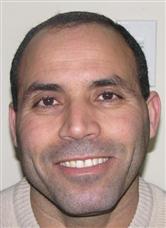TORONTO - The federal government is spending $62 million to expand the country's ultra-secret electronic spy agency, Defence Minister Peter MacKay announced yesterday.
The money will pay for construction of a new building in Ottawa for the Communications Security Establishment, the most secretive branch of the intelligence community.
The security branch operates an electronic eavesdropping system that collects signals intelligence. It works closely with allied agencies in the United States, Britain, Australia and New Zealand.
The announcement indicates the CSE has been growing since the 9/11 terrorist attacks in the U.S. Hundreds of employees have been hired since then and the existing campus on Leitrim Road was "no longer able to support the agency's day-to-day operations," the agency said in a press release.
The new 65,000-square-foot facility will open in 2011 and house up to 250 employees.
"A safe and secure Canada is one of the government's top priorities and CSE performs vital functions in safeguarding Canada's security," Mr. MacKay said in a statement.
Exactly what the CSE does to protect security is one of the most closely guarded secrets in government. From its nondescript headquarters in south Ottawa, the CSE intercepts, decodes, translates and analyses the phone calls and e-mails of Canada's adversaries. It also safeguards government computer systems.
Although the CSE operates under strict secrecy, signals teams are known to have played a role in the March 23, 2006, rescue of one British and two Canadian hostages in Iraq.The agency has also said it has listened to Taliban communications in Afghanistan. But most of its work is never publicized.
The expansion of CSE is a result of new powers it acquired following 9/11, changes in technology and the evolving nature of the international terrorism. Canada's mission in Afghanistan has also likely put additional strains on the agency, which said last year that a quarter of its intelligence reports related to the mission.
The agency originated after the Second World War when Ottawa merged two of its intelligence units to form what was then called the Communications Branch of the National Research Council. In 1975 it was renamed and placed under the wing of the armed forces. Following 9/11, terrorism replaced Soviet espionage as Canada's No. 1 national security threat and the branch shifted priorities accordingly.
At the time of the 2001 attacks, the CSE was not allowed to listen in on any talk that originated or terminated in Canada. That changed in December 2001, when Parliament passed the Anti-terrorism Act, which allowed the CSE to eavesdrop on foreign intelligence targets, even if those communications had one foot in Canada.
© The Ottawa Citizen 2008
Canadian spies to occupy new home in Ottawa
posted on May 27, 2008 | in Category War on Terror | PermaLink
by Stewart Bell
Source: The Ottawa Citizen
URL: [link]
Date: May 23, 2008
Government to spend $62M for building









